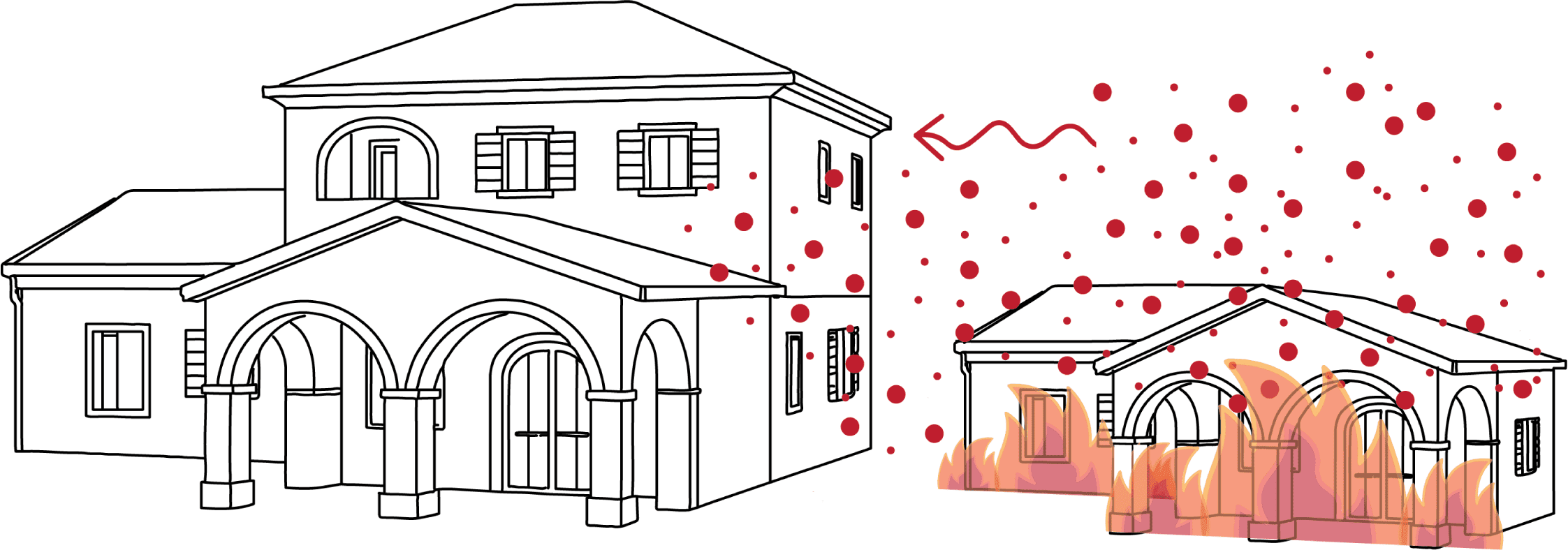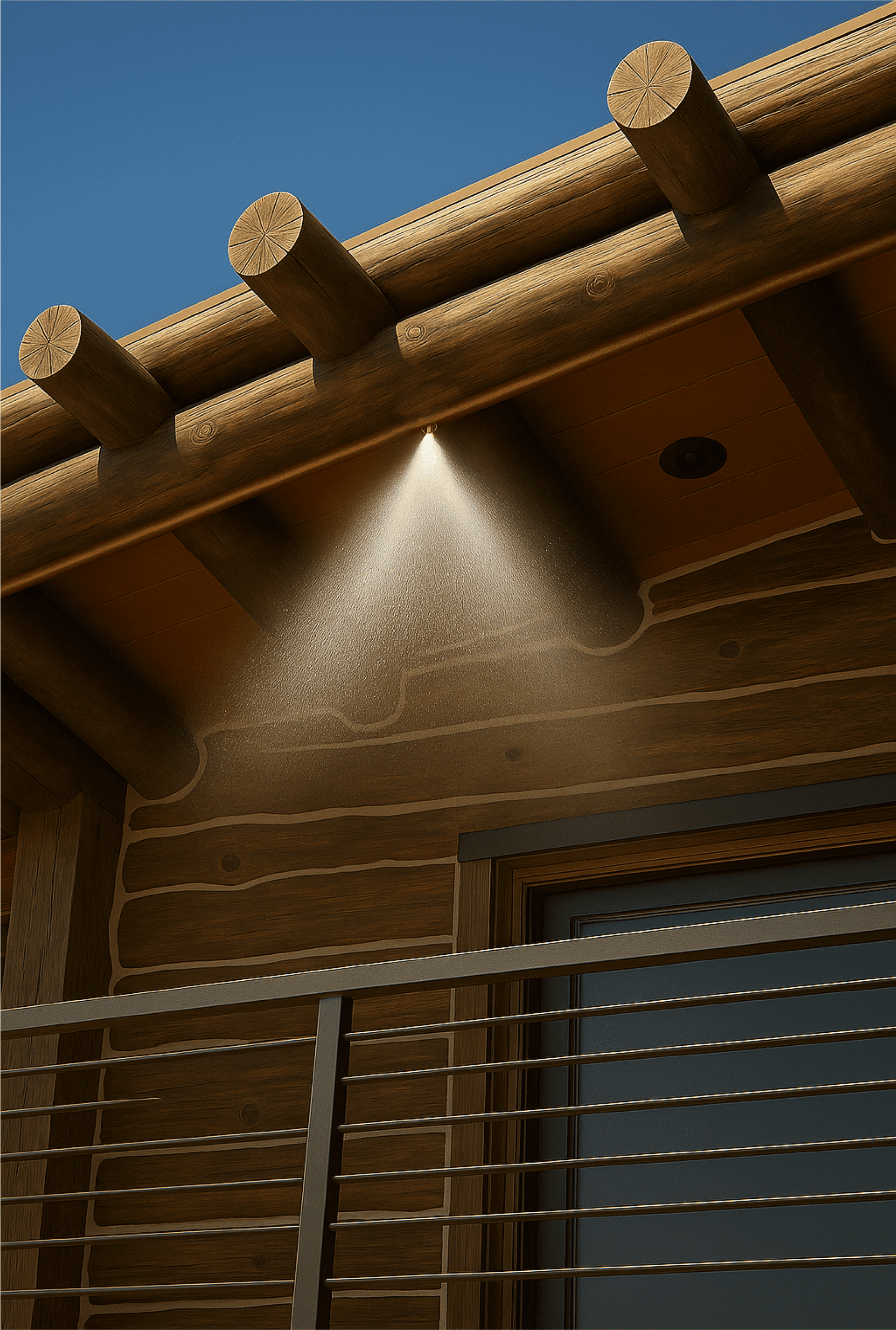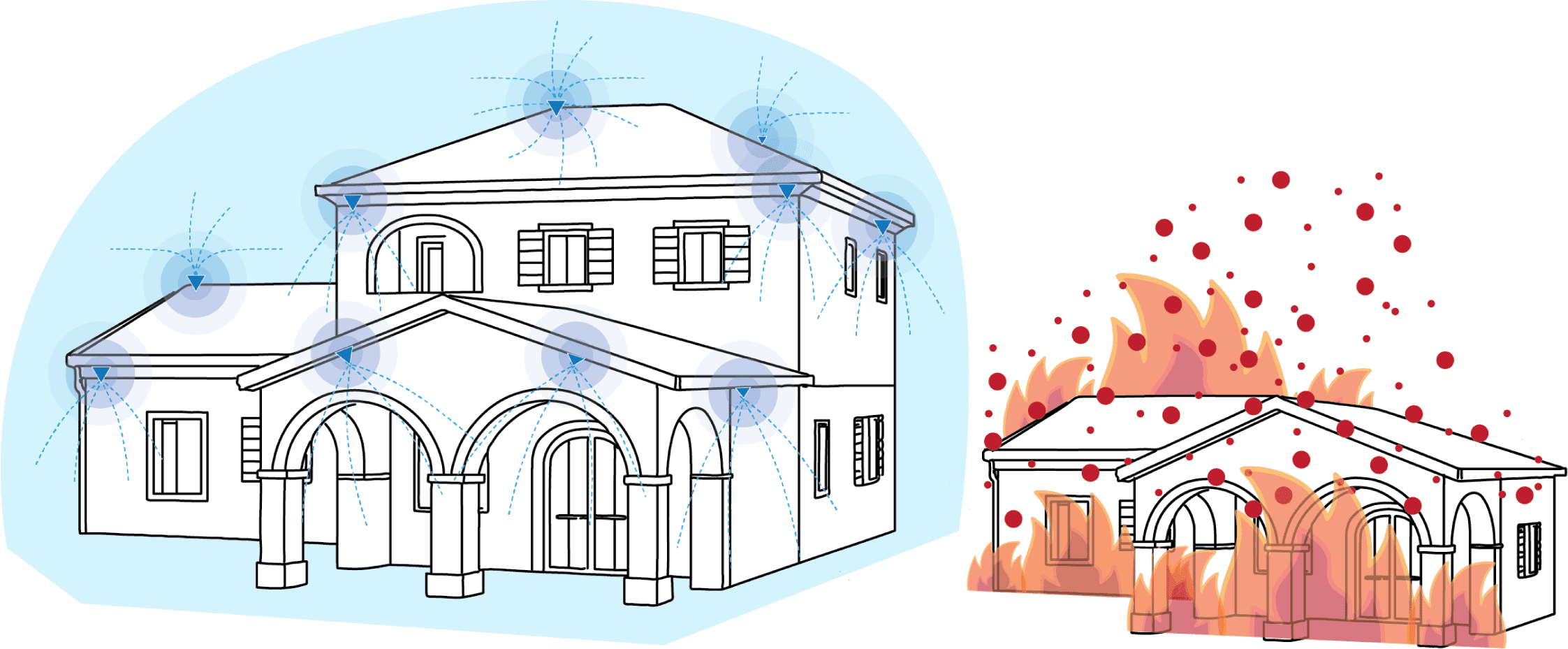Custom Exterior Sprinkler Systems for High-Risk Fire Regions
Protect Your Property Against Wildfire Threats
Protect Your Property Against Wildfire Threats
Changing Wildfire Conditions Require Smarter Protection.
In fire-prone regions, wildfire risk has become a year-round concern. Prolonged dry spells, thick vegetation, and intense wind events have made fire behavior more erratic and extreme. Over 90% of homes lost to wildfire ignite from windblown embers or radiation heat-not direct flame. Embers can travel more than a mile, landing on rooftops, decks, and dry vegetation, where ignition can happen quickly.
In 2024, California saw over one million acres burn. As these events increase in scale, protecting structures demands more than defensible space, it requires a layered defense. Targeted vegetation management, structural hardening, and engineered solutions like exterior sprinklers work in tandem to reduce risk.
Protect Your Property Today
Don’t wait for the next wildfire threat. Contact Engineered Fire Systems for a consultation an take a step toward further protecting your property.
Common Reasons Why Homes Ignite During Wildfires
Windborne Embers: Responsible for over 90% of home ignitions, embers can travel more than a mile ahead of the fire front. They accumulate in vulnerable areas like roofs, gutters, vents, and under decks, sparking ignition when they land on dry or flammable materials.
Radiant Hear: Extreme heat from nearby burning vegetation or structures can ignite building materials without direct flame contact. Radiant heat can preheat and ignite siding, eaves, and window frames, especially in homes with flammable exteriors or unprotected vents.


What Is an Exterior Fire Sprinkler System?
- Works alongside home hardening protections
- Supports your defensible space strategy

Types of Exterior Fire Sprinkler Systems
1. Building Envelope Protection Systems
2. Roof Protection Systems
3. Landscape Perimeter Protection Systems
How Are These Systems Activated?
Manual Activation: Control valves may be manually operated on-site via a central box.
Remote Activation: Internet-connected interface allows for activation and deactivation off-site.
Automatic Activation: Thermal sensors and flame detectors trigger the system when the fire is in close proximity.
Protect Your Property Today
Don’t wait for the next wildfire threat. Contact Engineered Fire Systems for a consultation an take a step toward further protecting your property.

Download Now: A Deep Dive into Specs, Layouts, and Performance Engineering.
See how exterior sprinkler systems are protecting homes in high-risk fire regions.
Common System Specs
Flow Rate: 25-35 GPM during operation
Zoned Control: System divided into 3-4 zones that operate independently; all sprinklers in a zone deploy when activated.
Misting Nozzle Placement: Oriented to minimize disruption by prevailing winds.
On-Site Water Supply: 5,000 Gallon Tank
On-Site Pump: 2 Horsepower
Backup Generator
Eave Sprinklers: 15′ Spacing
Roof Sprinklers: 40′ Spacing
Designed to reduce the risk of ignition, this system helps hydrate vulnerable surfaces, increase local humidity, and address common ember entry points. It integrates under-eave misting, heat and flame detection, and remote activation for a responsive approach to wildfire conditions. When triggered by nearby fire activity, the system can provide an added layer of exterior defense. If you’re building or retrofitting in a wildfire-prone area, this is a proactive way to enhance protection from the outside in.
Yes. Most existing homes can be fitted with exterior sprinklers through customized design and installation.
From consultation to final testing, most projects are completed in about four months.
Many insurers now acknowledge wildfire mitigation measures. A professionally engineered system may strengthen your coverage position or reduce premiums.
Yes. Our exterior sprinkler systems are engineered to perform in winter conditions. The on-site water supply is stored in a dedicated tank rather than left in the piping, eliminating exposure to freezing temperatures. When inactive, the system can be winterized to safeguard components, ensuring year-round reliability and operational integrity.
NFPA’s Firewise USA program encourages exterior sprinklers as a complement to, not a replacement for, other property protection measures.
Water supply options vary. An exterior sprinkler system typically requires its own private water storage to ensure reliable operation during a fire. In some cases, you may be able to connect to municipal water, but this depends on local regulations and water availability. Backup pumps and private water storage are often recommended to maintain a continuous water supply in an emergency.
Costs depend on factors such as property size, water source, and system complexity. Contact Engineered Fire Systems for a customized quote based on your specific needs.
